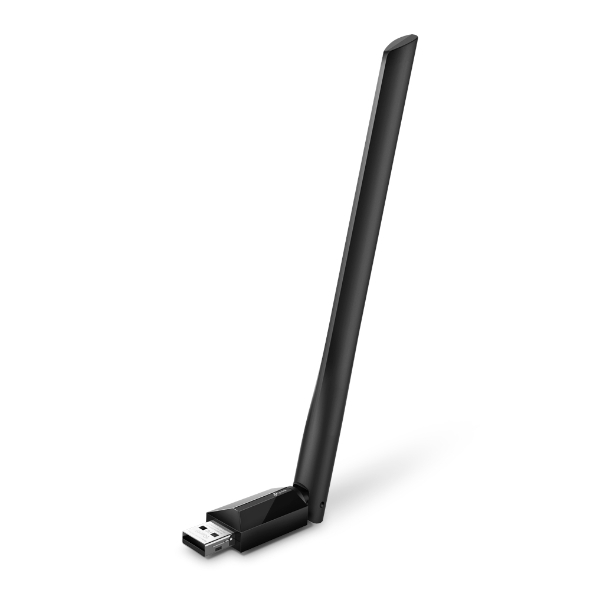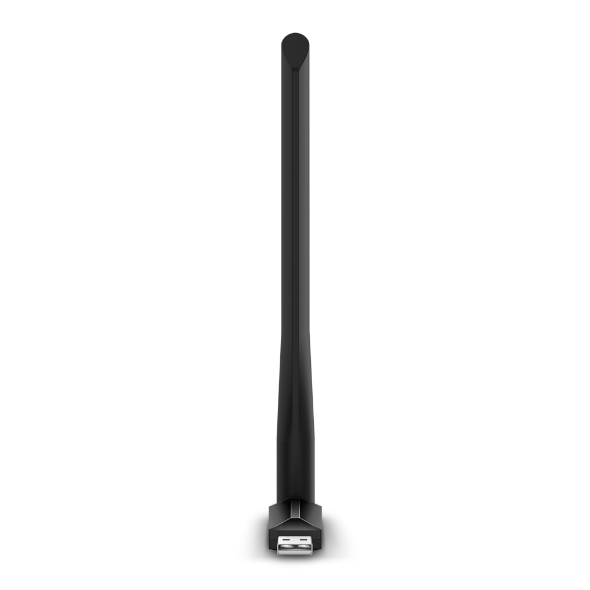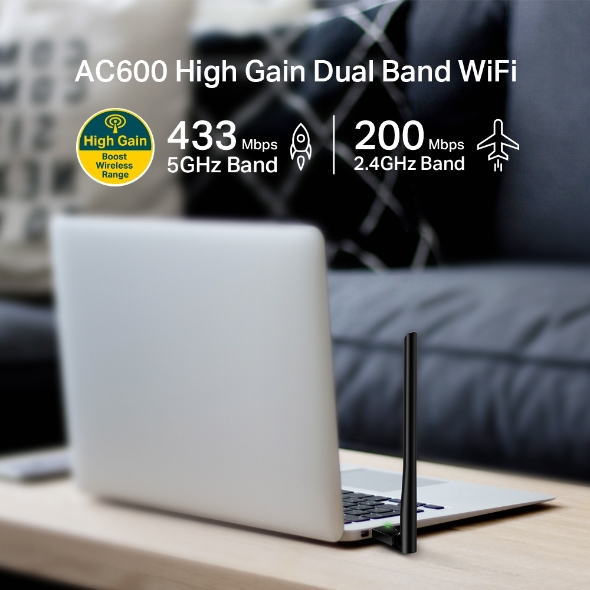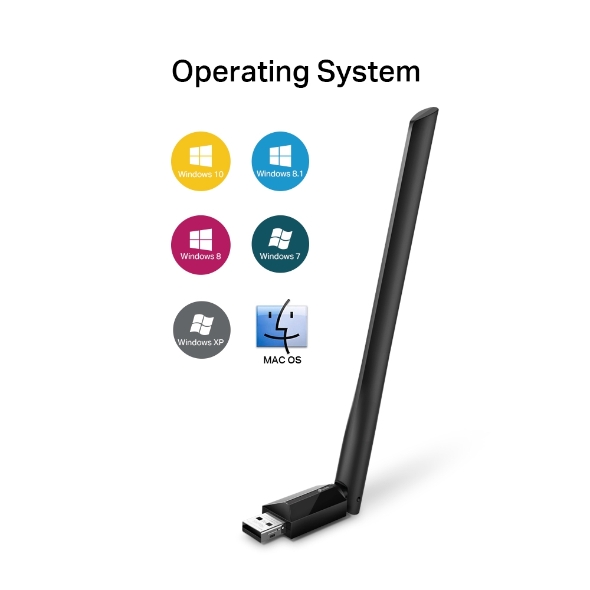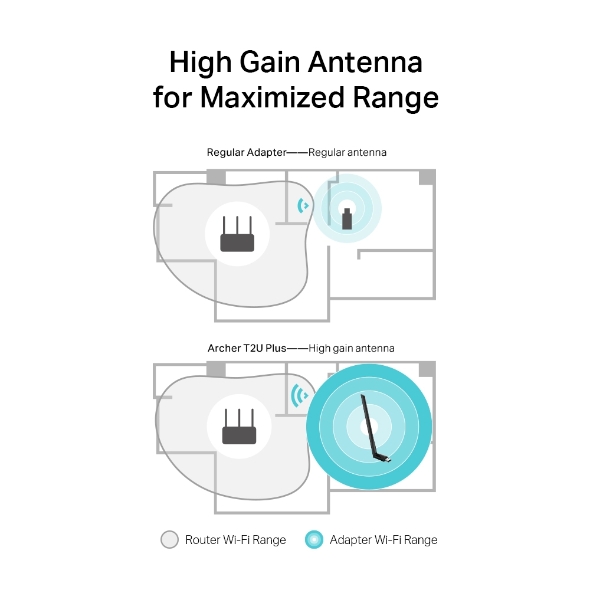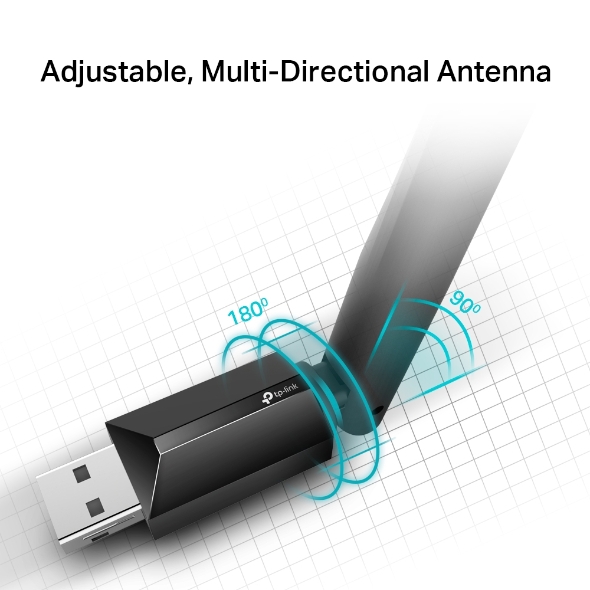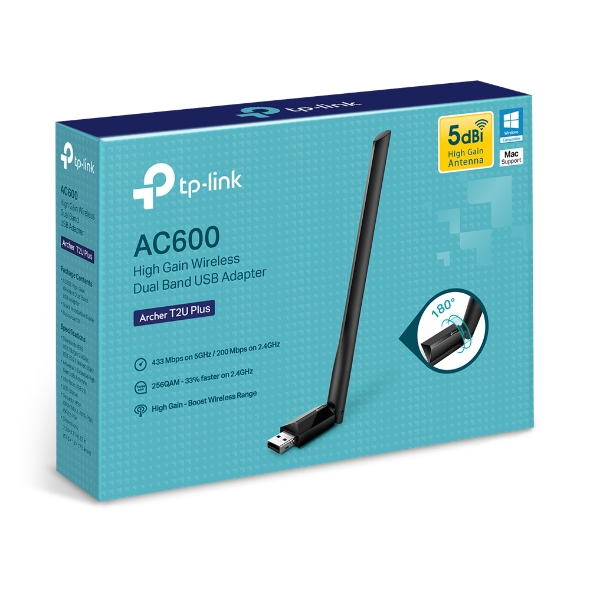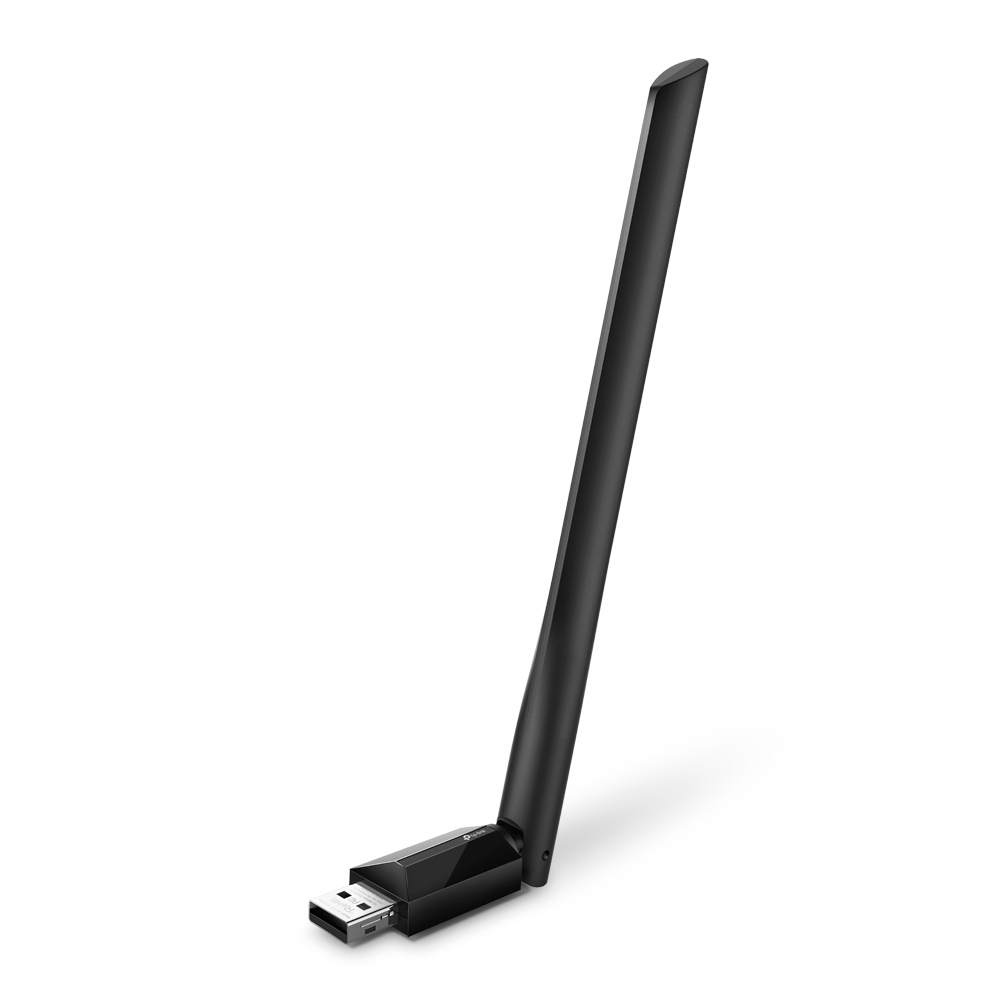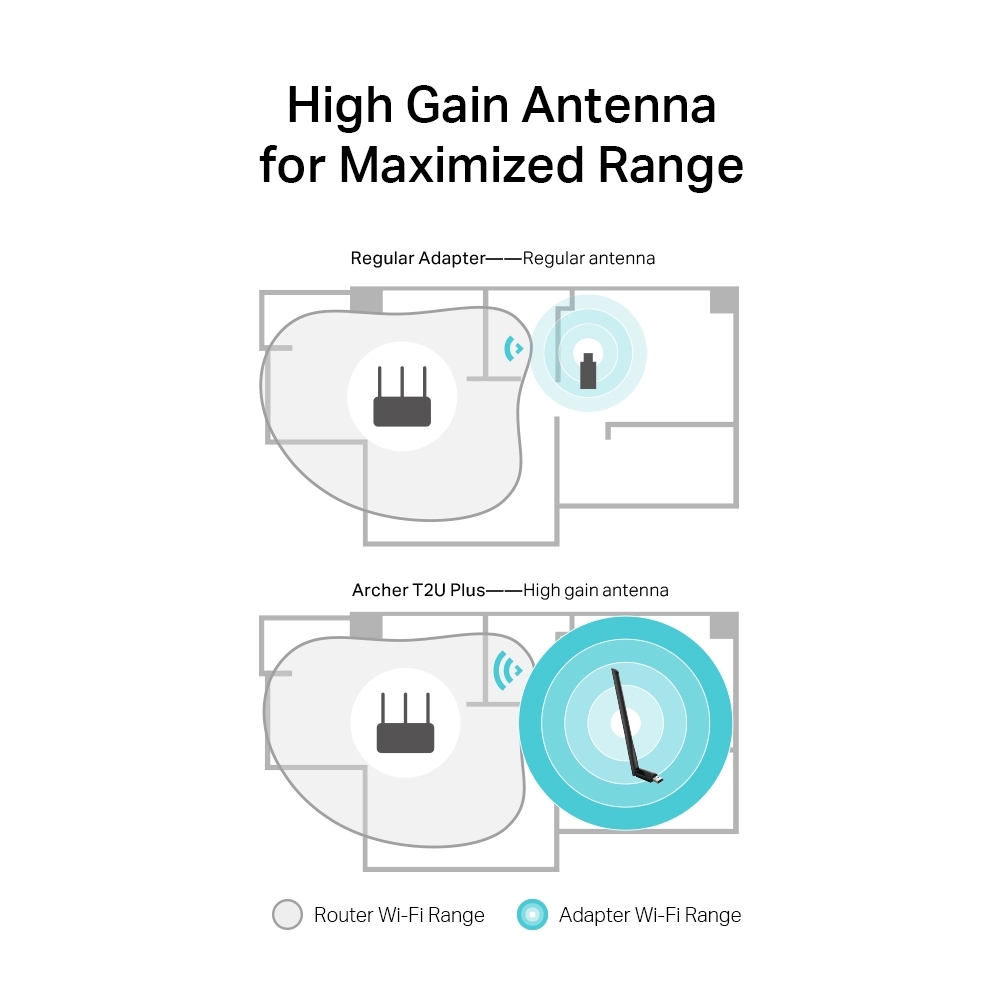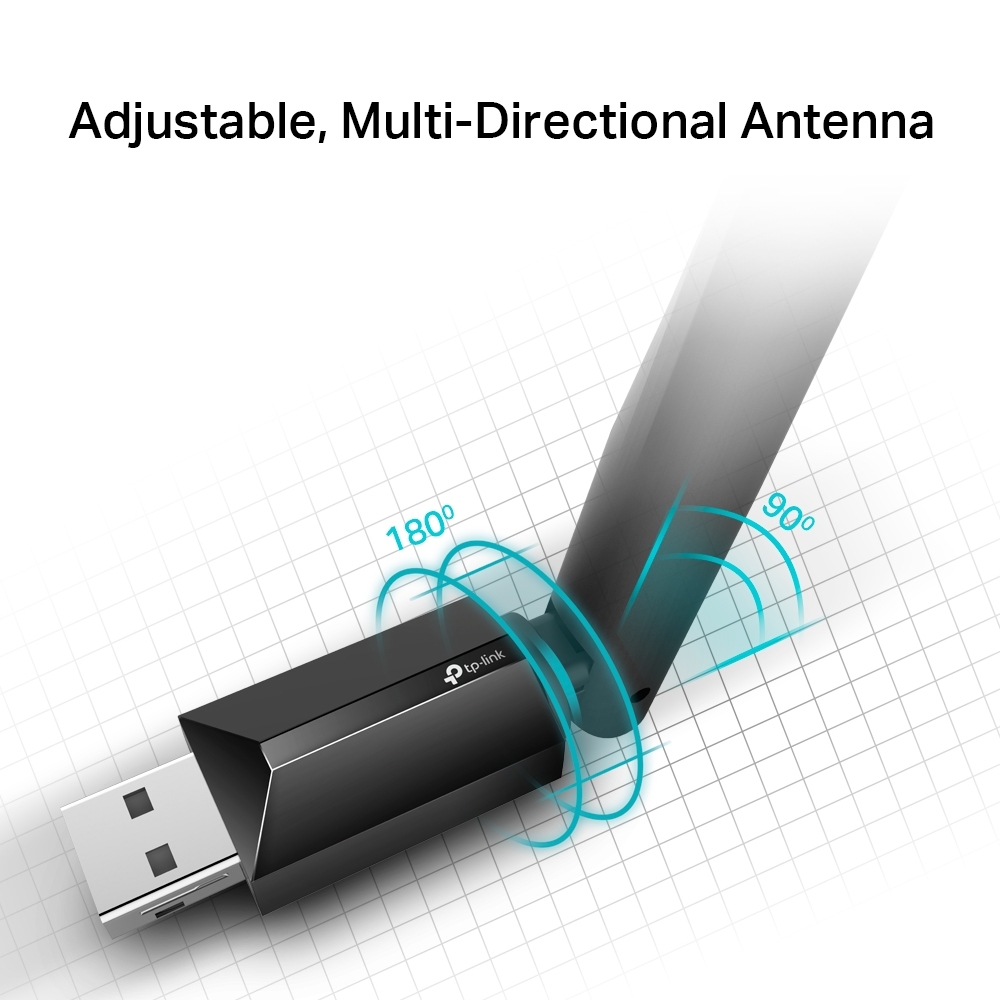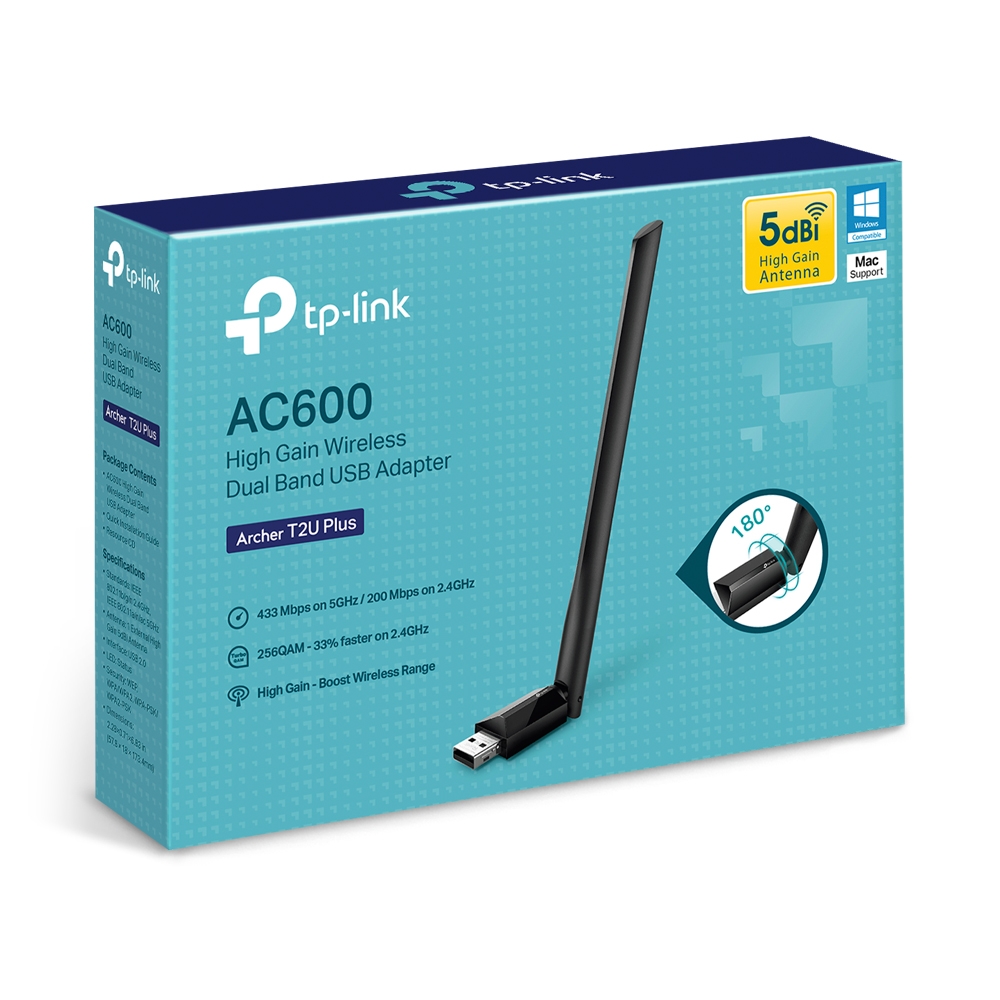Archer T2U Plus
AC600 High Gain Wireless Dual Band USB Adapter
- High-Speed Wi-Fi: 256QAM support increases the 2.4 GHz data rate from 150 Mbps to 200 Mbps, 200 Mbps on the 2.4 GHz band and 433 Mbps on the 5 GHz band, ensure you fully enjoy fast AC Wi-Fi.
- Dual Band Wireless: 2.4 GHz and 5 GHz band provide flexible connectivity, giving your devices access to the latest dual-band Wi-Fi router for faster speed and extended range
- High-Gain Antenna: A 5dBi high-gain antenna greatly enhances the reception and transmission signal strength of the USB adapter
- Supports the Latest Operating Systems: Fully compatible with Windows 11/10/8.1/8/7/XP, Mac OS 10.15 and earlier
| CARACTERÍSTICAS DE HARDWARE | |
|---|---|
| Interface | USB 2.0 |
| LED | Status |
| Dimensões (L x P x A) | 57.8 × 18 × 173.4 mm |
| Antena | 5dBi |
| FUNCIONALIDADES WI-FI | |
|---|---|
| Normas Wireless | IEEE 802.11b/g/n 2.4 GHz, IEEE 802.11a/n/ac 5 GHz |
| Wireless Speeds | 600 Mbps (200 Mbps on 2.4 GHz, 433 Mbps on 5 GHz) |
| Frequências | 2.4 GHz, 5 GHz |
| Modos Wireless | Ad-Hoc / Infrastructure Mode |
| Segurança Wireless | WEP, WPA/WPA2, WPA-PSK/WPA2-PSK |
| Tecnologia de Modulação | DBPSK, DQPSK, CCK, OFDM, 16-QAM, 64-QAM, 256-QAM |
| OUTROS | |
|---|---|
| Certificações | FCC, CE, RoHS |
| Conteúdo da embalagem | AC600 High Gain Wireless Dual Band USB Adapter Archer T2U PlusQuick Installation GuideResource CD |
| Requisitos de Sistema | Windows11/10/8.1/8/7/XP, Mac OS 10.15 and earlier |
| Environment | Operating Temperature: 0°C~40°C (32°F ~104°F)Storage Temperature: -40°C~70°C (-40°F ~158°F)Operating Humidity: 10%~90% non-condensingStorage Humidity: 5%~90% non-condensing |
† Maximum wireless signal rates are the physical rates derived from IEEE Standard 802.11 specifications. Range, coverage, and the maximum number of connected devices are based on test results under normal usage conditions. Actual wireless data throughput, wireless coverage, and number of connected devices are not guaranteed and will vary as a result of 1) environmental factors, including building materials, physical objects, and obstacles, 2) network conditions, including local interference, volume and density of traffic, product location, network complexity, and network overhead, and 3) AP limitations, including rated performance, location, connection quality, and AP condition.
